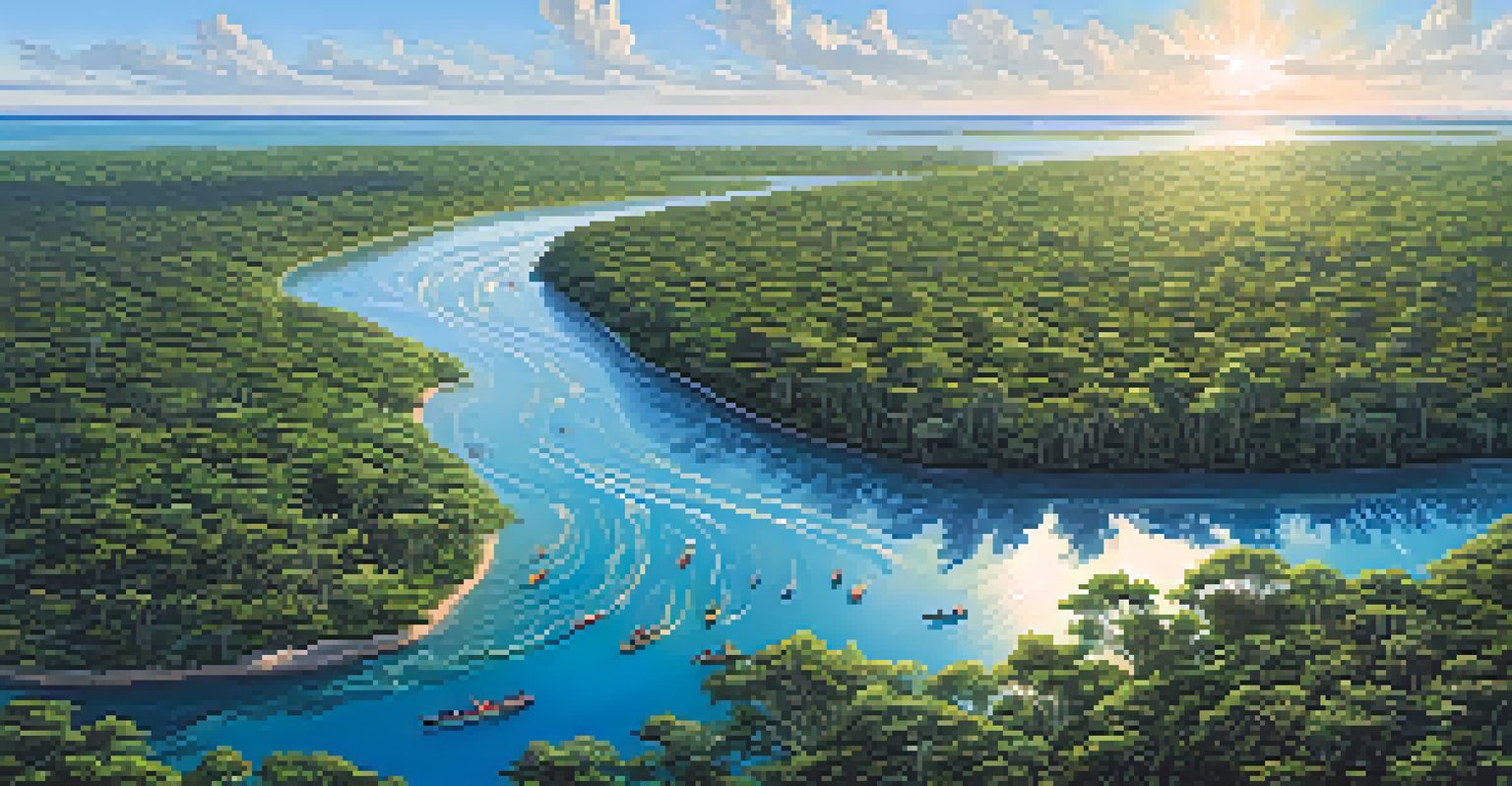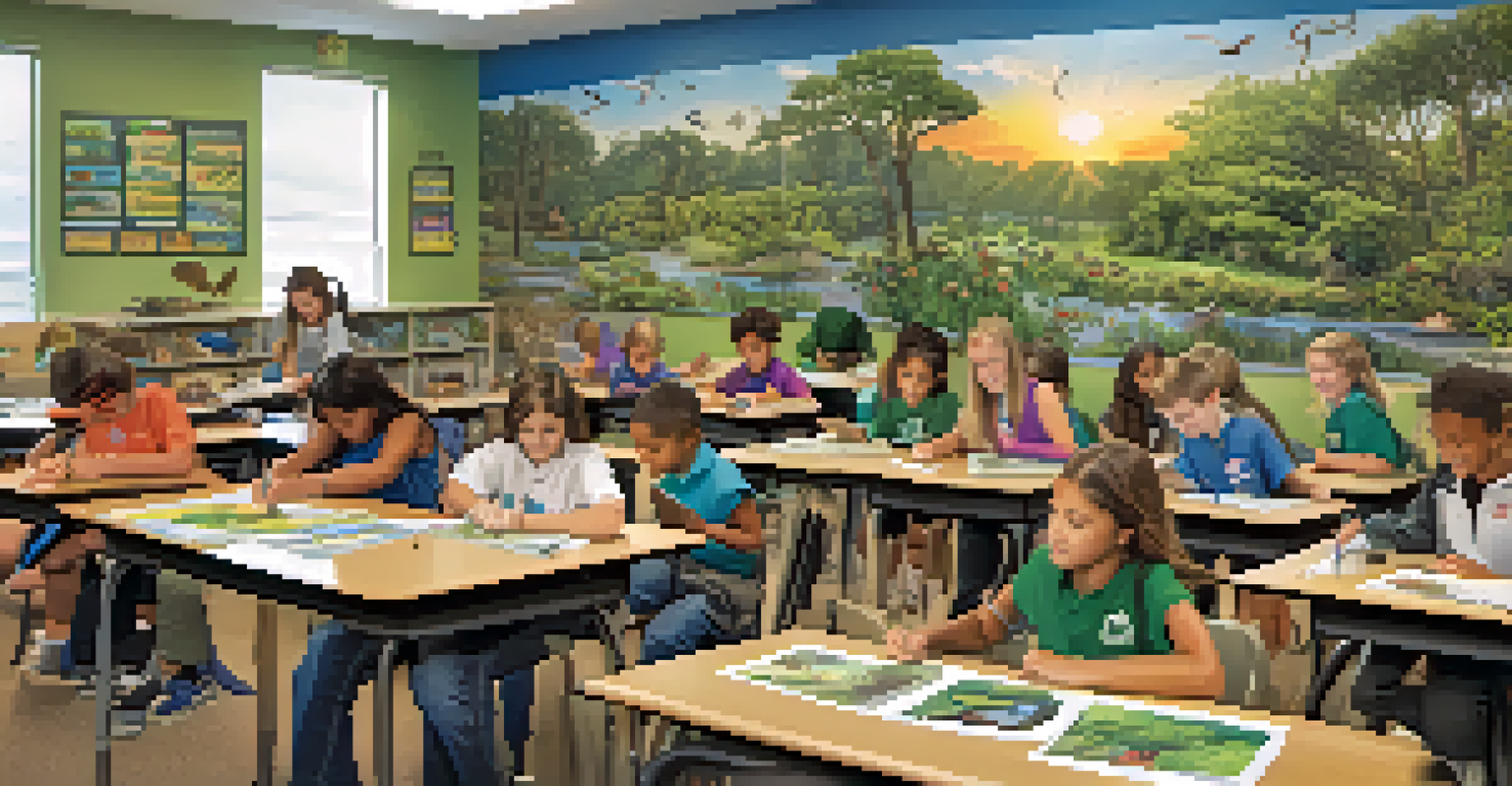Future of Wildlife in Florida: Innovations in Conservation Strategies

The Importance of Wildlife Conservation in Florida
Florida is home to a diverse array of wildlife, including endangered species like the manatee and the Florida panther. The state's unique ecosystems are crucial not only for the animals that inhabit them but also for maintaining overall environmental health. Unfortunately, these ecosystems face threats from urban development, climate change, and pollution, making conservation efforts essential.
The future will either be green or not at all.
Conservation isn’t just about saving the animals; it also involves preserving the habitats that support them. Healthy ecosystems provide clean air, water, and a balanced climate, benefiting all inhabitants of Florida, including humans. Therefore, the future of wildlife conservation in Florida is intrinsically linked to the well-being of the entire state’s environment.
Innovative conservation strategies are emerging as a response to these challenges, focusing on sustainable practices that engage local communities and utilize modern technology. The goal is to not only protect wildlife but also to foster a deeper appreciation for nature among Floridians.
Harnessing Technology for Wildlife Monitoring
Modern technology is revolutionizing how wildlife is monitored and studied in Florida. Tools such as drones, camera traps, and GPS tracking are providing researchers with unprecedented insights into animal movements and behaviors. This data is crucial for understanding population dynamics and identifying critical habitats that need protection.

For example, drones can cover vast areas quickly, allowing conservationists to locate and monitor endangered species without disturbing their natural habitats. Similarly, camera traps can capture images of elusive wildlife, giving researchers a non-invasive way to study animal populations. This technological approach enhances data accuracy and helps in making informed conservation decisions.
Wildlife Needs Habitat Protection
Conservation efforts in Florida are essential for protecting endangered species and their vital ecosystems from urbanization, climate change, and pollution.
Moreover, the integration of artificial intelligence (AI) is streamlining data analysis, enabling scientists to predict trends and formulate more effective conservation strategies. With technology at their disposal, conservationists can work smarter and more efficiently, ensuring that Florida's wildlife has a fighting chance against future threats.
Community Engagement in Conservation Efforts
Involving local communities in conservation efforts is a pivotal strategy for the future of wildlife in Florida. When residents participate in conservation activities, they develop a personal connection to the environment, fostering a sense of ownership and responsibility. Community-led initiatives can lead to more sustainable outcomes, as locals often have valuable insights into their ecosystems.
In every walk with nature, one receives far more than he seeks.
For instance, educational programs that teach residents about native species and their habitats can empower communities to take action, whether it’s through habitat restoration or wildlife monitoring. Local volunteers are often the first line of defense in protecting endangered species, as they can quickly respond to threats like poaching or habitat destruction.
Furthermore, partnerships between conservation organizations and community groups can amplify efforts, combining resources and knowledge. By creating a collaborative approach, Florida can enhance its conservation strategies while nurturing a culture of environmental stewardship.
Restoration of Natural Habitats
Habitat restoration is an essential component of wildlife conservation in Florida. Many species face challenges due to habitat loss caused by urbanization, agriculture, and climate change. Restoring natural habitats helps re-establish ecosystems that support diverse wildlife populations and promotes biodiversity.
Efforts such as wetland restoration projects play a crucial role in providing essential services like flood control and water filtration. These projects not only benefit wildlife but also enhance resilience against climate impacts, which is increasingly important in today's changing environment. For example, restoring mangroves and salt marshes can protect coastal areas from storm surges while providing critical habitat for fish and birds.
Community Engagement Enhances Conservation
Involving local communities in conservation fosters a sense of ownership and leads to more sustainable outcomes for wildlife protection.
Community involvement is key in these restoration efforts, as local knowledge can guide effective strategies. When people are engaged in the restoration process, they become advocates for sustainable practices, ensuring that these efforts are not only successful but also lasting.
Legislation Supporting Wildlife Conservation
Legislation plays a vital role in shaping the future of wildlife conservation in Florida. Laws that protect endangered species and their habitats provide a legal framework for conservation efforts and ensure that wildlife is safeguarded from harmful activities. Recent legislation has focused on enhancing protections for critical habitats and promoting sustainable land use practices.
For example, the Florida Forever program aims to acquire and preserve environmentally sensitive lands, ensuring that vital ecosystems remain intact for future generations. This type of proactive legislation not only protects wildlife but also enhances public access to natural areas, promoting outdoor recreation and tourism.
Continued advocacy for strong conservation laws is crucial, as changing political landscapes can impact funding and priorities. Engaging the public in these discussions and emphasizing the benefits of wildlife conservation can help secure ongoing support for legislation that protects Florida's unique biodiversity.
Collaborative Conservation on a Global Scale
Wildlife conservation in Florida does not exist in isolation; it is part of a global effort to protect biodiversity. Collaborative conservation initiatives involving international partnerships can enhance strategies and share successful practices. By learning from other regions, Florida can improve its own conservation efforts and address challenges more effectively.
For instance, programs that focus on migratory species, like birds and marine life, require cooperation across borders. Collaborative research and data-sharing can lead to better understanding and protection of these species throughout their life cycles. This global perspective is essential, as many wildlife issues transcend state and national boundaries.
Technology Boosts Wildlife Monitoring
Modern technology, including drones and AI, revolutionizes wildlife monitoring, providing critical data for informed conservation strategies.
Moreover, international funding and support can provide additional resources for local conservation projects. By connecting with global conservation networks, Florida can tap into expertise and funding sources that enhance its conservation strategies, ensuring a brighter future for its wildlife.
The Role of Education in Wildlife Conservation
Education plays a crucial role in shaping attitudes towards wildlife conservation. By teaching people about the importance of biodiversity and ecosystems, we can cultivate a generation of informed advocates and stewards of the environment. Educational initiatives can take many forms, including school programs, community workshops, and public outreach campaigns.
For example, programs that engage students in hands-on conservation projects can inspire a lifelong commitment to protecting nature. When young people participate in activities like planting native species or monitoring local wildlife, they gain a deeper understanding of ecological principles and their role in the environment. This experiential learning can foster a sense of responsibility that extends into adulthood.

Moreover, raising awareness about local wildlife and conservation challenges can mobilize community action. When people understand the importance of protecting their natural surroundings, they are more likely to support conservation initiatives and participate in local efforts. Education is, therefore, a powerful tool in ensuring the sustainability of wildlife in Florida.